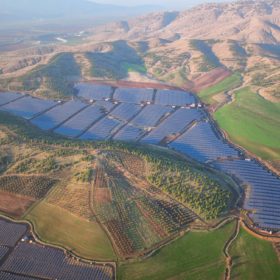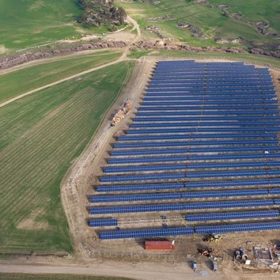Jordan’s universities install solar
pv magazine has learned the Hashemite University is soon going to announce the winner of its tender for a 5 MW solar PV park at its premises in the city of Zarqa in northeast Jordan. The solar installation represents an overall trend in the country, where an increasing number of educational institutions are embracing PV.
Jordan’s round two tender applicants announced
Jordan has impressed with its commitment to include a sizeable amount of solar PV power in its energy mix. The country aims to generate 10% of its energy from renewable sources by 2020, including 600 MW of installed solar PV.
Jordan’s rooftop PV sector thriving
Jordan leads Arab world in utility-scale solar PV installations with many large solar farms expected to go online in 2015. Residential and commercial rooftop sectors are also kick-starting the thriving solar sector.
Jordan’s solar tender bears fruit
Interest in the MENA country’s burgeoning solar PV sector attracts Japanese finance as modest plans unveiled.
Turkey aims for 3 GW of PV by 2023
In 2014, Turkey saved $850 million in energy imports due to the increase in the share of renewable energy.
Emerging markets 2015: Will Israel’s PV take off?
Despite the encouraging news coming lately from other Middle Eastern markets, Israel remains the region’s most hopeful case for solar PV development. But will Israel seriously decide to boost its photovoltaic sector in 2015? Or are we set for yet another year of generally positive installations but nothing close to what Israel could or should achieve?
PV puts other renewables in the shade in Israel
Israel’s government has approved the transfer of 520 MW of quotas for solar PV, signalling the beginning of an exciting time for solar power in the Middle East.
Israel launches tender for first phase of 170 MW PV park
A tender for a new 50 MW solar PV park in Israel will be launched on Monday. pv magazine has the story exclusively ahead of the tender’s official announcement.
Turkey hits all time electricity consumption record
Turkey’s electricity consumption scored an all time record last week, highlighting the country’s thirst for new power capacity. Yet renewable power development plods slowly onwards.
Cyprus to expand PV via net metering
The Mediterranean country is launching a second net metering program after a strong response to a similiar initiative last year. Despite broad support for renewable energy, the nation’s limited grid remains a problem for future expansion of renewables.





